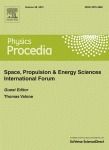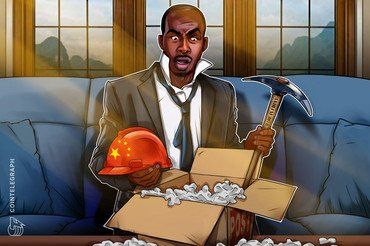The North Korean leader made his first public appearance in 20 days as he celebrated the completion of a fertilizer factory near Pyongyang.



The investigators concluded that diffuse bilateral pulmonary inflammation observed in COVID-19 is associated with a novel pulmonary-specific vasculopathy, which is distinct from DIC, and which they’ve termed “pulmonary intravascular coagulopathy (PIC).”
“Understanding how these micro-clots are being formed within the lung is critical so that we can develop more effective treatments for our patients, particularly those in high-risk groups,” O’Donnell commented. “Further studies will be required to investigate whether different blood thinning treatments may have a role in selected high-risk patients in order to reduce the risk of clot formation.”
The authors suggest that larger, controlled studies will be needed to determine whether more intensive anticoagulation and/or targeted anti-inflammatory therapies might help reduce PIC in patients with severe COVID-19. The findings may also be relevant to growing evidence that some ethnicities are more likely to develop serious COVID-19 than others. “Given that thrombotic risk is significantly impacted by race, coupled with the accumulating evidence that coagulopathy is important in COVID-19 pathogenesis, our findings raise the intriguing possibility that pulmonary vasculopathy may contribute to the unexplained differences that are beginning to emerge highlighting racial susceptibility to COVID-19 mortality,” they concluded.

With the trillions of antibodies the human body can make, finding the antibody with the right combination of potency against a target and ease of manufacturing is, at best, an arduous, time-intensive endeavor for drug developers. AbCellera Biologics Inc. has developed a way to dramatically speed that process.
It is using its proprietary AI system to empower the search. It is mining the diversity of antibodies made by the immune system to find the relatively few that are optimized by nature to be well-suited for drug development. “A human makes trillions of different antibodies, but only a small set binds to the target of interest. Of those, only a few can be developed as drugs,” Carl Hansen, Ph.D., CEO of AbCellera, explained.
Hansen sees AbCellera as a “discovery and innovation shop. We identify the properties of antibodies that make them easy to manufacture and potent.”
Education Saturday with Space Time.
It’s not surprising that the profound weirdness of the quantum world has inspired some outlandish explanations – nor that these have strayed into the realm of what we might call mysticism. One particularly pervasive notion is the idea that consciousness can directly influence quantum systems – and so influence reality. Today we’re going to see where this idea comes from, and whether quantum theory really supports it.
The behavior of the quantum world is beyond weird. Objects being in multiple places at once, communicating faster than light, or simultaneously experiencing multiple entire timelines … that then talk to each other. The rules governing the tiny quantum world of atoms and photons seem alien. And yet we have a set of rules that give us incredible power in predicting the behavior of a quantum system – rules encapsulated in the mathematics of quantum mechanics. Despite its stunning success, we’re now nearly a century past the foundation of quantum mechanics and physicists are still debating how to interpret its equations and the weirdness they represent.
I just watched an interesting series of videos on YouTube that I’d like to recommend. It is an introductory level series of very short videos on the topic of transhumanism. They are in French with subtitles. Guillaume Loublier created these to spread the word of Transhumanism throughout France. There are four videos, and if you start with the first one, then they all play in sequence automatically.
Watch them and let Guillaume know what you think of his work.
Version anglophone traduite par Julia VALETTE
https://www.linkedin.com/in/julia-valette-742993172/
Du programme Tolérance Augmentée réalisé par Laura CHARPENTIER, conçu, écrit & interprété par Guillaume LOUBLIER.
Who am I? Le transhumanisme!

There’s been a lot of talk about quantum computers being able to solve far more complex problems than conventional supercomputers. The authors of a new paper say they’re on the pat h to showing an optical computer c an do so, too.
The idea of using light to carry out computing has a long pedigree, and it has gained traction in recent years with the advent of silicon photonics, which makes it possible to build optical circuits using the same underlying technology used for electronics. The technology s hows particular promise for accelerating deep learning, and is being actively pursued by Intel and a number of startups.
Now Chinese researchers have put a photonic chip t o work tackling a fiendishly complex computer science challenge called the s ubset sum problem in a paper in Science Advances. It ha s some potential applications in cryptography and resource allocation, but primarily it’s used as a benchmark to test the limits of computing.

As the holder of more than 270 patents in 27 countries—including 112 in the US alone—Tesla rightfully earned his place in history, but not every invention of Tesla made it to production. With that in mind, we combed through the records and found 7 of Tesla’s most substantial inventions that never got built.
To find out: https://bit.ly/2y7SpuA 🚀.
This ingenious cactus leather is a true alternative to animal leather that doesn’t have a negative impact on the planet like other faux leathers that use plastics.

O,.o circa 2012.
An apparatus or structure is proposed for generating high-frequency gravitational waves (HFGWs) between pairs of force–producing elements by means of the simultaneous production of a third time derivative of mass motion of the pair of force–producing elements. The elements are configured as a cylindrical array in the proposed structure and are activated by a radiation wavefront moving along the axis of symmetry of the array. The force-producing elements can be micro-electromechanical systems or MEMS resonators such as film-bulk acoustic resonators or FBARs. A preferred cylindrical array is in the form of a double helix and the activating radiation can be electromagnetic as generated by microwave transmitters such as Magnetrons. As the activating radiation wavefront moves along the axis of the structure it simultaneously activates force elements on opposite sides of the structure and thereby generates a gravitational wave between the pair of force elements. It is also indicated that the Earth is completely transparent to the HFGWs. Thus a sensitive HFGW detector, such as the Li-Baker under development by the Chinese, can sense the generated HFGW at an Earth-diameter distance and could, in theory, be a means for implementing transglobal HFGW communications.
